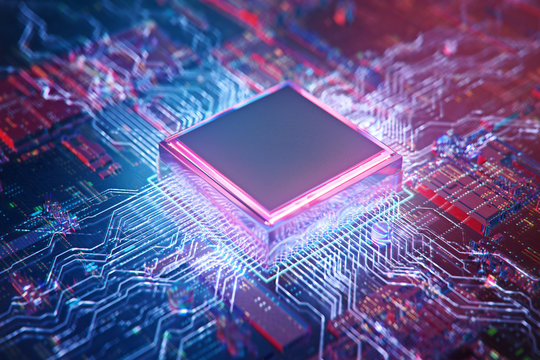🤖 Microprocessor vs. Processor: Understanding the Difference
 Parth Chauhan
Parth Chauhan
When diving into the world of computing, you might hear the terms microprocessor and processor used interchangeably. While they are closely related, they have distinct meanings and roles in modern technology. Let's break down these concepts to understand their differences more clearly. 🧠💻
🔍 What is a Processor?
A processor is a general term that refers to any computational unit that performs tasks and processes instructions. It can be:
Central Processing Unit (CPU): The main component that executes instructions for general computing tasks. 🖥️
Graphics Processing Unit (GPU): Specializes in rendering graphics and handling parallel tasks related to visuals. 🎮🖼️
Digital Signal Processor (DSP): Designed for processing real-time signals like audio and video. 🎵📹
💡 What is a Microprocessor?
A microprocessor is a specific type of processor, integrated onto a single chip. It is essentially a compact CPU combined with other essential components, such as memory and input/output controls. Here's what sets it apart:
Compact Design: Combines multiple functionalities (CPU, memory, I/O control) into a single chip. 🧩
Programmable: Can be programmed to perform various tasks, making it versatile for different applications. 📜💾
Cost-Effective: Designed to be affordable and efficient for mass production and consumer electronics. 💰
🔄 Key Differences: Microprocessor vs. Processor
Scope:
Processor: A broad term covering various types including CPUs, GPUs, and DSPs. 🌐
Microprocessor: A specific type of processor that integrates multiple functions into a single chip. 🔧
Design:
Processor: Can be a standalone unit or part of a larger system, often requiring additional components. 🧩
Microprocessor: Integrates the CPU with other components like memory and I/O control into one chip. 🕵️♂️
Functionality:
Processor: Varies in design depending on its task, e.g., general computing, graphics, or signal processing. 🖥️🎨📡
Microprocessor: Serves as a general-purpose CPU, programmable to handle a wide range of operations. 🧩
🔧 Applications
Processors are used in diverse systems including:
Personal computers 🖥️
Servers 🌐
Mobile devices 📱
Specialized applications like gaming and multimedia 🎮📹
Microprocessors are typically found in:
Embedded systems (e.g., home appliances, industrial machines) 🏠🔧
Portable devices (e.g., smartphones, tablets) 📱📊
Compact electronics where space is at a premium 🌟
📝 Conclusion
In summary, while all microprocessors are processors, not all processors are microprocessors. The key distinction lies in the integration of multiple functionalities into a single chip in a microprocessor, making it ideal for compact and cost-effective applications. Processors, on the other hand, encompass a broader range of computational units designed for various specialized tasks.
📚 Reference
For a deeper dive into microprocessor technology, check out Ramesh Gaonkar's authoritative book:
Gaonkar, Ramesh S. "Microprocessor Architecture, Programming, and Applications with the 8085." 📘
Subscribe to my newsletter
Read articles from Parth Chauhan directly inside your inbox. Subscribe to the newsletter, and don't miss out.
Written by

Parth Chauhan
Parth Chauhan
I'm Parth Chauhan, a versatile web developer with expertise in both frontend and backend technologies. My passion lies in crafting clean, minimalistic designs and implementing effective branding strategies to create engaging and user-centric experiences. I am proficient in Java, Python, C, C++, SQL, MongoDB, computer networks, OS, NoSQL, and DSA. I thrive on bringing ideas to life by building solutions from scratch and am always excited to explore and master new technologies. My approach is centered around coding with precision and creativity, ensuring each project is both functional and aesthetically pleasing. Currently, I'm open to freelance opportunities and eager to collaborate on new ventures. Let’s connect to discuss how we can work together to enhance your project and achieve outstanding results.